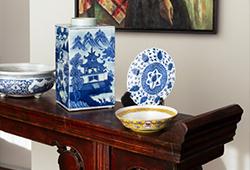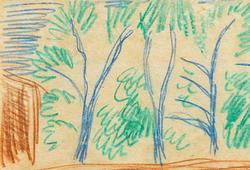546
964991
A pair of wooden weiqi boxes with covers, Qing dynasty (1664-1912).
A pair of wooden weiqi boxes with covers, Qing dynasty (1664-1912).
Each is of melon-form, with well-rounded double lobes divided in half by ridged beading. The high curving shoulder rises from the tapered base, and the gently domed cover has a flattened edge and a central dimple. Diameter 11 cm.
Minor wear.
Literature
Similar boxes depicted in Marcus Flacks, Custodians of the Scholar's Way: Chinese Scholars' Objects in Precious Woods, London, 2014, p. 306.
More information
The game of Go 'Wéiqí' originated in China in ancient times. It was considered one of the four essential arts of a cultured Chinese scholar in antiquity and is described as a worthy pastime for a gentleman in the Analects of Confucius. The game was described by Thomas Hyde in 1694, but it did not become popular in the West until the late 19th century.









































